Bruce Topp’s British rogue is the perfect fit
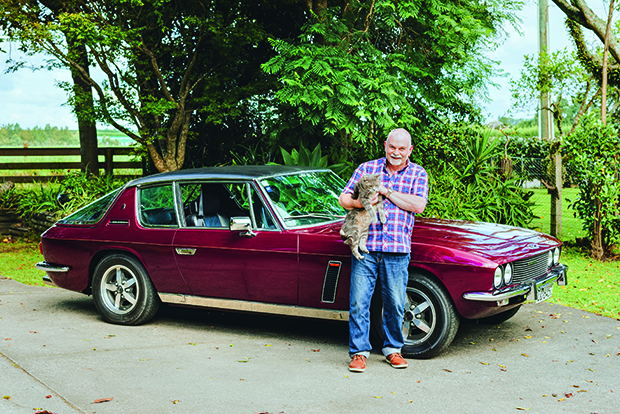
Bruce Topp and his cat, Maserati Quattro(paw)te.
Sporty, with a long nose, glass hatch and gravelly growl, the Jensen Interceptor, released in the 1970s, was the dream of someone who wanted something a bit different. Bruce Topp is that someone.
Words: Jane Warwick Photos: Justin Aitken
The pōhutukawa trees sag low and brilliant along one side of the Matatā Straight, and on the other, the Pacific Ocean is azure and laps the shore.
Just as childhood summers are often remembered for their endless sunshine, regardless of how sunny the weather really was, so is the drive from Bruce Topp’s home in Te Puke to Whakatāne: always bloom-laden trees and a sapphire sea. It is Bruce’s favourite drive, one he often takes in his favourite car — a Jensen Interceptor 1973 Mk3, painted deep claret red with a black vinyl roof and wrapped around black upholstery.
He’d wanted a car like it since he was a child and had a toy one, made by one-time diecast scale model producer Dinky Toys, a brand once beloved by little boys. But that model was yellow and that of Jensen’s Ferguson Formula (FF) all-wheel drive. The FF was five inches (about 13 centimetres longer than the standard Interceptor and slightly heavier), but Bruce didn’t know that or even care. It was a smooth wave of a shape with what he would eventually recognise as the classic, distinctively Jensen, large, curving wraparound rear window.
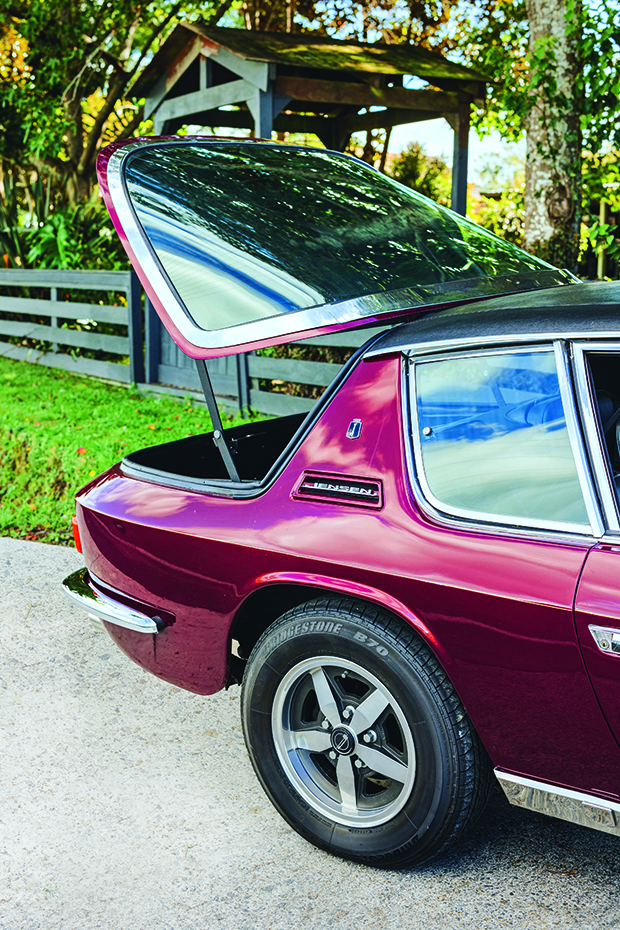
It’s funny how life works out. After 30 years amid the sweet-smelling produce of his floristry businesses in Huntly and Mt Maunganui, it seems odd that petrol fumes should now tickle Bruce’s nose. But after he sold up and retired, friends were looking for retail/forecourt staff for their busy Z site in Te Puke. Finding himself not as ready to leave working life as he had thought, Bruce put up his hand and found himself in a heady mix of retail and cars — his two favourite things. “It suits me perfectly,” he says. “And if a customer needs help checking their oil, water, tyre pressures etc., they seek me out, saying, ‘You’re the man with all the classic cars; can you help? I have a warning light on the dash.’ I still work at the site when staff are out of action or at super busy times.”
It ticked all the boxes Bruce didn’t even know he had.
It was also a small car compared with the vehicles in which Bruce and his now-famous twin sisters — folk/comedy duo Jools and Lynda Topp — learned to drive; first a Morris pick-up truck and a sturdy English David Brown tractor, then a 1963 Plymouth Belvedere. They careered around their Ruawaro (near Huntly) farm and the backcountry roads — doing doughnuts and drifting before boy racers were invented — with a specifically American eight-cylinder drawl.
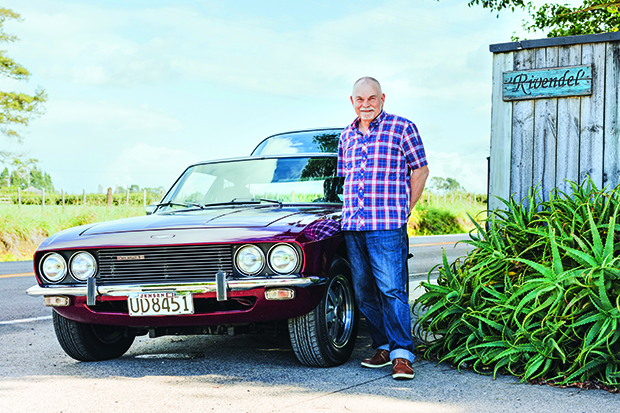
So, it’s a little incongruous that Bruce has always been drawn to English marques. (These days, Jools is more in love with flesh-and-blood horsepower, although she drives a big ute and a horse truck. And although Lynda has the same ute as her twin, she has also developed a penchant for BMWs, owning a 5- and then a 3 Series).
It took 30 years of saving and craving before Bruce finally got his dream car. Of course, there were other cars, but the Jensen Interceptor was his ultimate goal and desire.
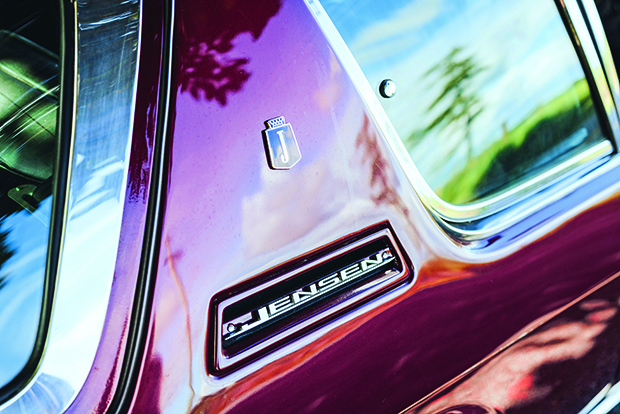
It was hard sometimes to keep the dream alive; life often got in the way. There were bills to pay, places to go, a business to build, and a home to buy; sometimes, he couldn’t put as much aside as he would like. Also, the marque was only manufactured for a decade — between 1966 and 1976 — and only 6000 were produced. Only 6000! Of that, 3000 were known to be still in working order scattered around the globe.
But, in fact, the odds in Aotearoa were not bad — when Bruce seriously started thinking about buying one 18 years or so ago, there were thought to be 100 in the country. In Australia, there were about 200, so proportionately, population-to-population, it could be said Aotearoa was oversubscribed.
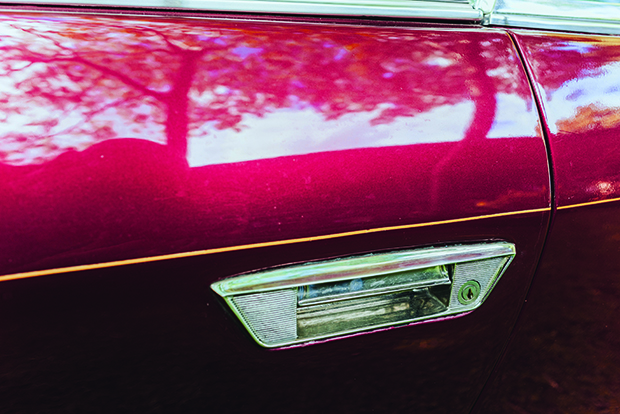
And so it all started to align. Bruce then had a florist shop — From The Heart — in Mount Maunganui, and business was good. Now was the time to reward himself. Not only that, but two Jensen Interceptors had recently come on the market. Two! If that wasn’t a portent, Bruce didn’t know what was.
One came up for sale in Wellington, and Bruce was quickly on the phone to the seller. “I bought a one-way plane ticket thinking I would be driving back, but the day before I was due to leave, the seller rang to say he’d sold it. So that was $400 down the drain. But a week later, I spotted the other car going up for auction in Christchurch. It didn’t sell, so I contacted the owner and negotiated a price. I bought another plane ticket and took off for Christchurch.”
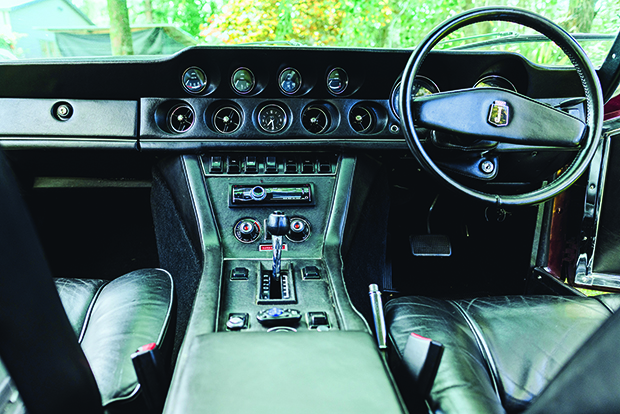
At last, Bruce was in his dream car, and the drive back from Christchurch in a cyclonic storm, followed by an 11-hour delay on the Cook Strait ferry, didn’t come even close to ruining the moment. When the car threw the drive belt for the air conditioning at Tūrangi, it conveniently happened within striking distance of a workshop, and Bruce was soon on the move again. He never had a moment’s doubt that he would be a perfect fit behind the wheel.
“I never had to fix anything on this one, apart from that aircon belt. It was and is in a good original state and only has 70,000 miles on the clock. I’ve done some work to keep it spick and span, some little cosmetic repairs. I’ve also tried to keep it as original as possible, but at some stage, things will start to expire.”
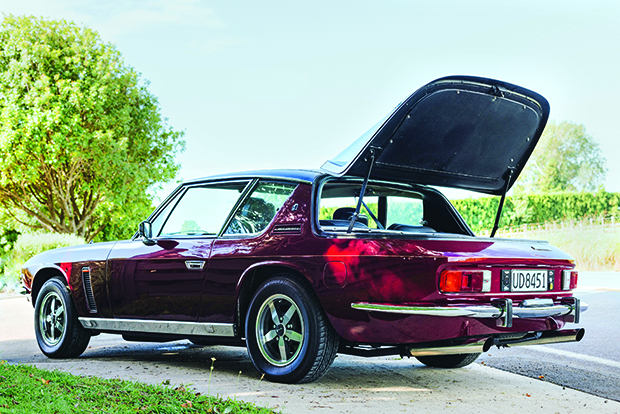
But replacements won’t be hard to find. “Philip Barker at Jensen Motors is my go-to man for everything Jensen — panels, badges, wheels, and other motor bits. And particular parts are being re-manufactured, so keeping the car in good repair won’t be hard.”
There comes a stage when time is no longer really on your side. After decades in retail on his feet all day (he sold his floristry business 15 years ago), Bruce and his knees are reaching a bit of an impasse. Getting in and out of low-slung cars is not quite the ease of movement it used to be.
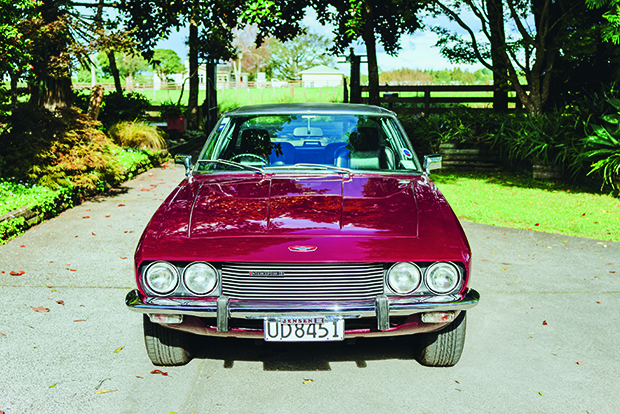
“I’ve begun to realise how short a time you can be an owner-driver,” he muses. “With a knee operation coming up, I am forced to face up to the fact that driving can be a bit of a luxury. I saw my dad struggle to keep driving his big Jag. But I shall drive until I am forced to relinquish the privilege. I don’t drive the Jensen enough, really, as I have 12 cars in my collection, and all need a good run regularly, so it’s often turn and turn about.
“But, every time I get inside, every time I see how the gauges are just so on the dash, when I hear that particular noise of the door closing, when I hear the engine first turn over — that big Chrysler 7.2-litre growl — I fall in love all over again.”
THE HISTORY BEHIND THE INTERCEPTOR
Jensen first used the Interceptor name from 1950-1957 in vehicles fabricated using glass-reinforced plastic. In 1966, the company revised the marque with the help of Italian coachbuilder Carrozzeria Touring, which came up with a completely new silhouette, including the now-famous trademark 180-degree glass rear hatch. The bodyshell was also once more built from steel. In another Italian alliance, Jensen had these early bodies made by Vignale in Turin before eventually bringing production back in-house in England. The company also began using Chrysler V8 engines, a big deal for a reasonably small car. It was considered a fairly dramatic vehicle, and at its first outing at the 1966 British Motor Show in London, it won many awards. It was also admired for its stability and handling and considered extremely quiet.

